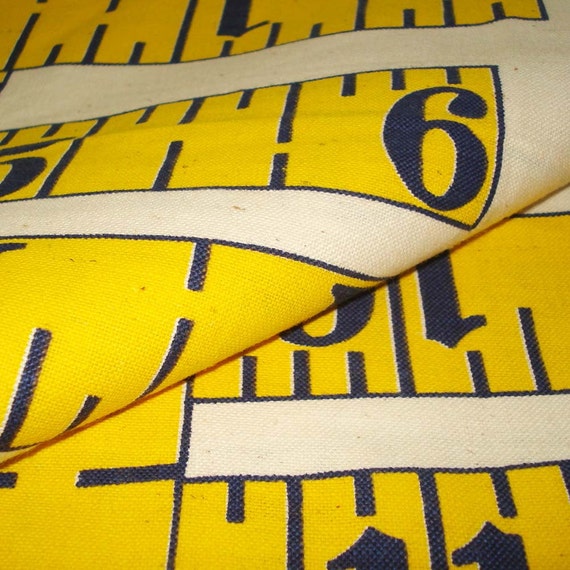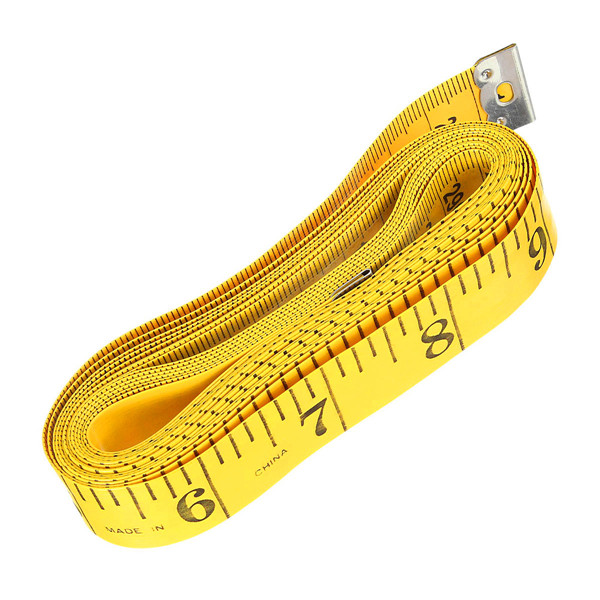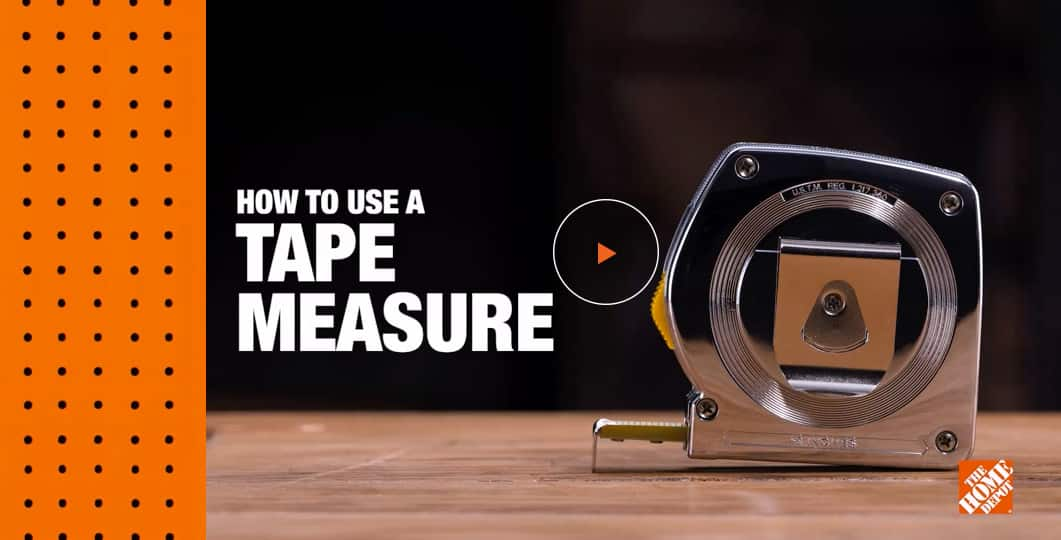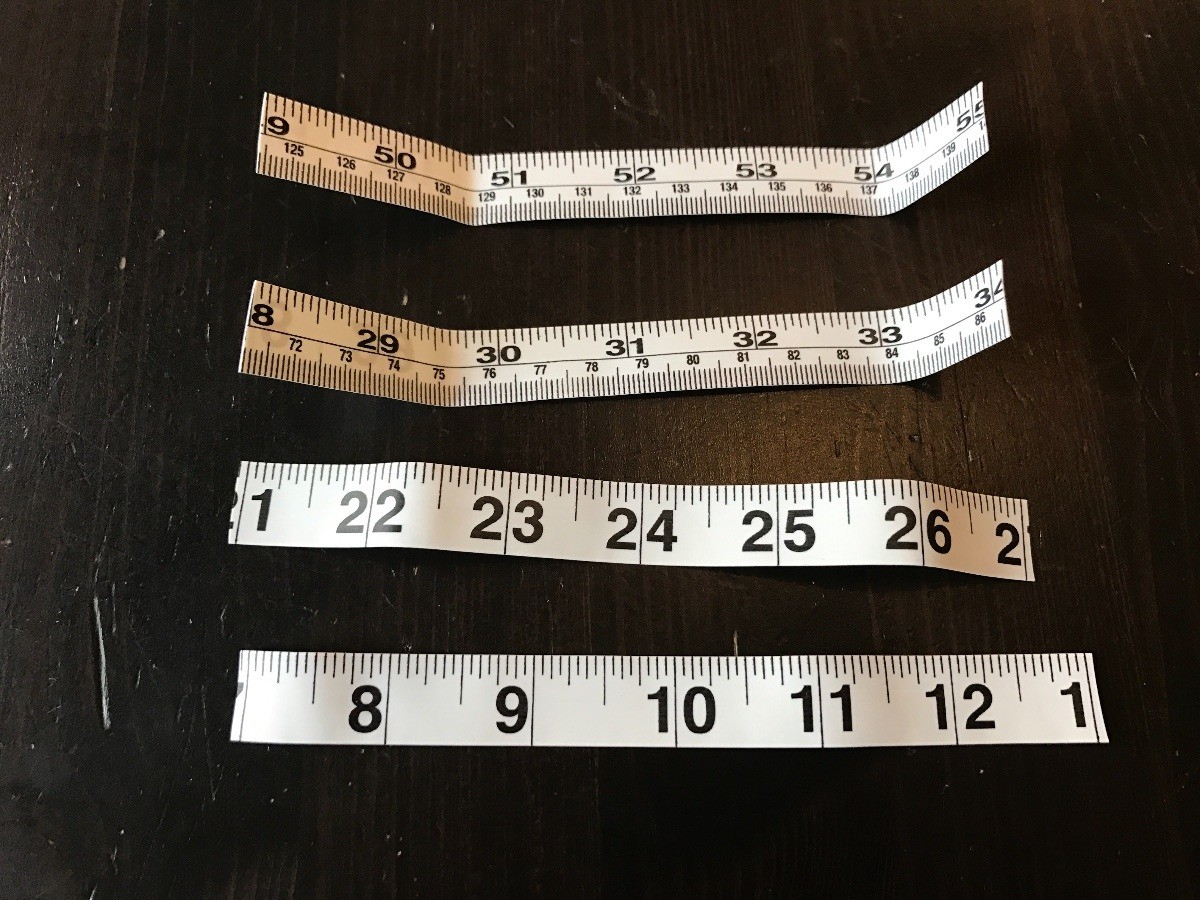To measure pants, start with a waist measurement by wrapping a flexible measuring tape where you would normally wear your pants. Next, measure your hips by standing with your legs about 6 inches apart and wrapping the tape around the fullest part of your hips. Then, put on a pair of shoes and have someone measure from your crotch to the heel for the inseam measurement.
For shirt measurements, wrap the tape under your armpits around the fullest part of your chest. If you're measuring for a men's dress shirt, you should also measure around the base of your neck. Some of these measurements can apply to women's clothing as well if shopping for a suit or tailored dress shirt rather than a typical blouse. Tape measures are often designed for specific uses or trades. Tapes may have different scales, be made of different materials, and be of different lengths depending on the intended use.
Tape measures that were intended for use in tailoring or dressmaking were made from flexible cloth or plastic. These types of tape measures were mainly used for the measuring of the subject's waist line. Today, measuring tapes made for sewing are made of fiberglass, which does not tear or stretch as easily.
Measurements On A Sewing Tape Measure This type of tape measure will have a floating tang or hook on the end to aid measuring. A tape measure of 25 or even 100 feet can wind into a relatively small container. The self-marking tape measure allows the user an accurate one hand measure. It's simply necessary for a seamstress to have a measuring tape at hand. Better yet, several tapes of different colors at once.
Take your own inseam and outseam pants measurements with no assistance whatsoever. Simply stand on the included footpiece to provide the tension you need to measure your own inseam or outseam. Your measurement is then taken from the end of the tape held in your hand. Next, detach the removable footpiece to measure your waist or any other part of your body. Quick and easily done with only one set of hands.
It's the only tape you need for tailor-accurate pants measurement. Perfect for sewing, tailoring, and custom or bespoke clothing measurements. We can custom print with your logo, etc. in minimum quantity of 200.
Customized orders receive a proof prior to production. You also should know the measurements of your favorite garments. If you have clothes that fit you well already, you can simply measure those and reference those as the baseline when shopping online. Your favorite garments implicitly tell you how you like your clothes to fit, but also give you other measurements that your body measurements do not. For pants, this is the inseam, outseam, thighs, front and back rise, and the leg opening. For shirts and jackets, this would be shirt length and body width.
The first thing to look for when online shopping is the size chart. Clothing manufacturers will lay out bust, waist, and hips measurements in inches or centimeters that correspond to sizes. Each brand or designer uses a different scale, so it's best to check the measurements on which that brand bases its sizing. I usually do need to size up when I shop at Reformation, just as I need to size down when I shop at J. Crew, and I know this because of my measuring tape.
Size labels vary depending on the store, but sizing charts tend not to lie. Instead, I'd get something that looked like a multiplication table, that expected me to know the circumference of my waist, bust, and hips. Preposterous, I would think, before closing the pop-up window in a huff. Then, I would either buy nothing at all, or order several things that sometimes ended up being a terrible fit. (I sure showed them!) But once I received my measuring tape in the mail, it was shockingly, stupidly easy to take all my necessary measurements.
Like men, your key areas to measure will be your chest, waist, hips and inseam. But you'll also want to measure your "natural waist", or the slimmest part of your torso, and the fullest part of your legs and bust. If you plan on wearing collared shirts and blouses, add neck size and sleeve length to this list as well. Measure the waist where you want the waistline of your pants to sit. Traditionally men's waists are measured at the natural waistline, just above the belly button. One way to find the natural waist is to bend the torso to the side and find the crease.
This natural waist measurement is best for use with trousers or high-rise pants. However, most men's casual pants and jeans today sit much lower than the natural waist, just above the hip. As with the chest, for this measurement you'll want to encircle the waist with the tailor's tape. Use a flexible tape measure at least 36″ long.
Don't try to take clothes measurements with standard 12″ ruler you'll end up with an inaccurate measurement. If you have no tape measurement handy and this is somewhat of an emergency, you can always download a printable measuring tape online. While using a tape measure is typically the easiest way to measure yourself, it is not the only way to take your measurements. If you don't have a tape measure, you can measure yourself using a piece of string and a ruler, yardstick, dollar bill or even your own hand. If you are unsure of your exact size, we have provided a measurement range for our waist and hip measurements. Due to the optimal stretch and recovery of our proprietary fabric compared to a rigid fabric, we recommend that you order one size smaller if you prefer a slimmer fit.
If you would like to sell your unwanted clothing online on eBay, Poshmark, etc., it is really important to know how to measure clothes. In today's world, every brand of clothing has a different way of sizing. One person's size 6 can be another person's size 4 and what may be listed at mid-thigh length according to the brand may actually be high or lower thigh depending on the wearer. When washing and/or tailoring are factored in (assuming it's not brand new/never worn), the measures could definitely vary from the original purchased garment. By listing the most important measurements, it gives the potential buyer a real chance to see if it could fit them, as they'll never be able to actually try it on before buying. It also going a long way towards having satisfied customers because your listing of the piece was accurate and trustworthy.
In the standard size chart for women, the body measurements are always in direct relation to each other. If the body measurements are out of proportion, it is an indication for a possible figure problem, such as full or small bust, waist, hips as well as strong or flat seat. Well, that's not exactly true—usually, I'm a size four. Let's face it, you need to know your body to get a good fit, and that starts with accurate measurements.
I'll admit, I've had some problems with this in the past when measuring myself. If you have a little fat in the area you're measuring, or even muscle, it's hard to know how tight to pull the tape measure. For men, taking your own measurements is about paying attention to a few key areas. For pants and slacks it requires height, waist size, and inseam measurements, while shirts focus on chest size, sleeve length and neck size.
The sale of dual Metric/US Customary scale measuring tapes is slowly becoming common in the United States. For example, in some Walmarts there are Hyper Tough brand tapes available in both US customary units and Metric units. So, the inclusion of a metric scale requires the measuring device either to contain 3 scales of measurement or the elimination of one of the US Customary scales. Additionally, you should wear tight-fitting clothes so you can better see where you're measuring and reduce any bulk from your clothing. This measurement is used for pants.The inseam is the distance from the uppermost part of your thigh to your ankle. It is easiest to measure the inseam based on a well-fitting pair of pants.
Measure from the crotch to the cuff on the inside seam of the leg. The number of inches, to the nearest ½", is the inseam length. It's best to measure your inseam with a pair of shoes on so that you can ensure the hem hits at the right point on your shoe. The hem should hit at the middle of the heel shaft or should hit just slightly above the flat shoe. And so, I feel better about gauging my size with a measuring tape. You can measure a dress to find its size and length by laying it on a flat surface and using a measuring tape.
You can also measure your body to figure out which sizes work best for you. It's easy to take these measurements and well worth your time. When taking your measurements, be sure to use a cloth measuring tape — not a metal measuring tape. This will ensure that you're measuring your body accurately. In addition, measure only over bare skin or skin-tight clothes so as to ensure the most accurate measurements.
If you're into online shopping, knowing your body measurements is a necessity to getting clothes in the right sizes. J.Crew sizing is different from H&M sizing, and retailers can even be inconsistent across their own line. Sizing inconsistencies can be attributed to different fabrics, updated cuts of products bearing the same name, and even vanity sizing. Many clothing catalogs or fitness programs ask you to take body measurements.
All you really need is a soft measuring tape and someone to help you, though you can do it yourself. Keep in mind that when you're measuring, you should have the tape measure snug but not tight. You should be able to fit a finger under it. Also, the measurements you take will be slightly different depending on if you're buying women's clothing or men's clothing. Then, there's the added variable of vanity sizing.
For example, a pair of jeans labeled as a size 32 waist may actually measure 34 inches. This is mostly because jeans with lower rises measure larger than the natural waist size. Rather than label these lower-rise jeans as a 34, brands will play to the customer's vanity and label them as a 32. Finally, you'll want to stand in front of a mirror.
Ideally, a full length one, but if you don't have one, use a mirror where you can see as far down as your hips. Checking your measuring tape in the mirror as you're measuring yourself is important for accurate measurements. Then, pull the measuring tape taut so it is firm against the neck but doesn't feel as though it's choking. Finally, add half an inch which will allow for movement. This is slightly different than the waist measurement you use when you buy pants, so don't assume you know this. It's important to stand in a relaxed, normal position (unless you're able to suck in your stomach and hold your breath all day long).
Run the tape around the fullest part of the belly. This is usually around the level of the belly button. The measuring tape should be snug on the skin, but not squeezing in. Click here formore details on how to measure your waist around. I have had to give measurements for shoes, and yeah, they're kind of tricky! One option is to use a flexible seamstress tape measure to get the insole measurement.
That way, you can put it right into the shoe and measure from the toe to the heel. Sometimes the angle/heel height can make that insole measurement slightly different for different shoe sizes. And for measuring heel height, make sure to subtract the height of the platform if there is any or state it as a separate measurement. Another option is to see if ASOS has a sizing guide that you can point a buyer to. Clothes can be measured on either a dress form or laid flat on a hard surface. Pants, shorts, and knits tend to measure more easily and accurately when laid flat.
For either option, the garment should be smoothed out or ironed as wrinkles and creases can affect accuracy. You will need a sewing tape measure, but if you don't have one, a non-stretchy string with a ruler/yardstick could be used in a pinch. I would also suggest a pen and paper, so you can measure everything at once and enter online later. Taking accurate body measurements is straightforward and easier than most people realize. All you need is a cloth tape measure, keeping the tape level and firm, but not too tight. Make sure to measure over bare skin or tight clothing, but never over loose clothing.
Knowing your measurements is helpful in sizing overall, but especially when shopping online. Because you're not able to try clothes on before you buy them, you miss out on the realtime fit analysis. Whether it's shopping for new jawnz or secondhand and vintage, you're more likely to avoid returning your new purchase if you have your measurements recorded.
Pay attention to the material of the tape – it must be strong to serve you as long as possible without stretching. Modern professional tapes are made of fiberglass and NEVER stretch. When choosing a tape measure for sewing, remember that it should be soft and flexible. A rigid measuring tape will not fit on your body or on a pattern and fabric and all measurements will turn out to be incorrect.
Standing with feet shoulder width apart, wrap the measuring tape around the fullest part of your hips, across your butt and straight across the front of your pelvis. Make sure to keep the tape snug, but not tight, and ensure that the the tape measure is level from front to back. Using a flexible measuring tape with your feet slightly apart, take your waist and hip measurements keeping the tape parallel to the floor.
If you don't have a flexible measuring tape, you can use a string and then measure the length against a ruler. Methods for determining measurements are not necessarily standardised, but most sellers utilise the measurement styles of waist, hip, bust and inseam. The best way to get accurate measurements is to have them professionally taken.
This is especially important for woman and bra sizes, which can be tricky to fit without being being tried on. LookSmart Alterations has over 25 years experience in alterations, tailoring and repairs, and have store locations right across Australia. We'd be happy to take your measurements and provide you with the perfect fit to compliment your style and body type. And having your clothes sitting just right can really make the difference between looking good and looking great in a piece of clothing. You will need a friend to assist you for measuring sleeve length.











































